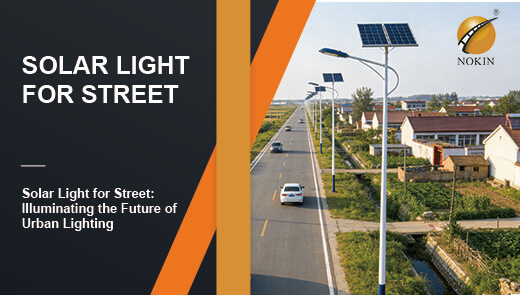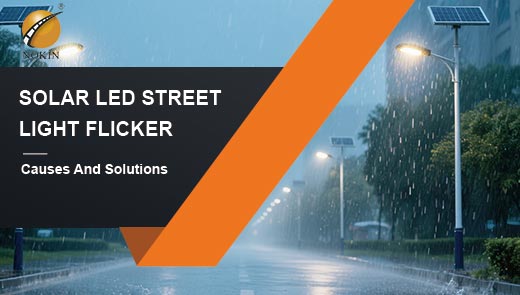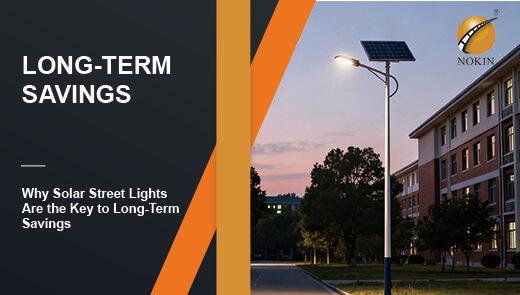How to Design Flood Lighting for a Football Pitch
Imagine a football match under the stars, with players battling it out on the green field. However, due to insufficient flood lighting, passes and shots are blurry and difficult to discern. The enthusiasm of the spectators is dampened by obstructed views, and referees struggle to make accurate calls. At this point, flood lights become the “beacons of light” illuminating the field. They are not only the foundation for ensuring smooth gameplay but also a key element in enhancing the viewing experience. This article will delve into how to select and layout flood lights to create a professional football field lighting solution.
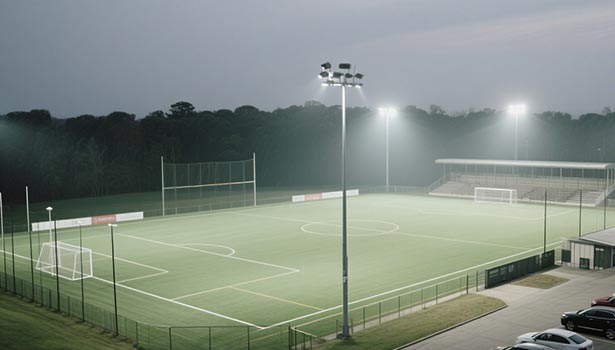
Lighting requirements for the football field
Training matches
Typically, an illumination brightness of 200 lux is required, which meets the basic needs of players for daily training without being overly intense. Taking community teams as an example, during daily training, a brightness of 200 lux is sufficient for players to clearly track the movement of the football and accurately judge the positioning of teammates.
Professional matches
Professional matches involve high-intensity competition and fast-paced action, so an illumination brightness of 700 lux is required to ensure that match details are clearly visible. At this brightness level, spectators and referees can clearly observe the subtle footwork of professional players when controlling the ball, as well as their agile changes of direction during dribbling.
Televised matches
To ensure high-quality television footage and meet the stable, adequate lighting requirements of cameras, avoiding shadows or underexposure in the footage, a lighting brightness of 1000 lux is required, allowing television viewers to enjoy a clear viewing experience.
World cup or major international events
Such globally renowned events have the strictest lighting requirements, necessitating a brightness of 1,500 lux to ensure that both on-site spectators and global viewers watching via television or online platforms do not miss any thrilling moments.
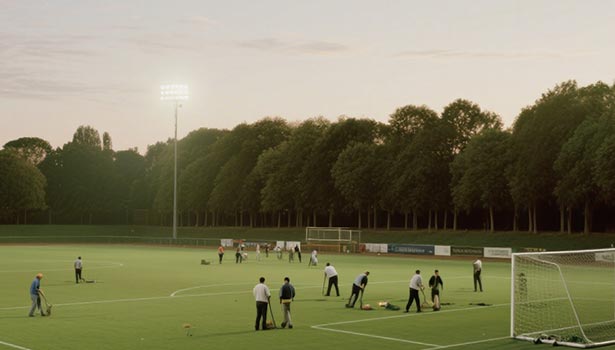
Types of flood lights
Halogen flood lights
Halogen flood lights are popular due to their affordability and high brightness. The warm white light they emit is similar to natural light, creating a cozy atmosphere at the venue. Halogen flood lights were commonly used in early small-scale football fields or community stadiums. However, they have significant drawbacks, including low energy efficiency and high power consumption. At the same brightness level, halogen flood lights consume several times more energy than LED flood lights. Additionally, they generate a significant amount of heat during operation. There have been cases where poor heat dissipation from halogen flood lights caused localized wilting of nearby grass, and there is even a safety risk of fire. Therefore, additional heat dissipation measures may be required when using them.
LED flood lights
In recent years, LED flood lights have gained widespread favor. They are highly energy-efficient, have a long lifespan, and consume significantly less energy than traditional lighting fixtures. According to statistics, the lifespan of LED flood lights can reach 50,000 to 100,000 hours, whereas halogen lights have a lifespan of only 1,000 to 2,000 hours. This not only reduces electricity costs but also minimizes the frequency of replacements.
Additionally, LED flood lights offer multiple color temperature options, ranging from warm yellow for a cozy atmosphere to cool white for a clear and bright visual experience, allowing for the creation of an ideal venue ambiance according to specific needs. In many modern football stadium renovations, LED flood lights have become the preferred choice, such as in the home stadiums of some top European football clubs. After switching to LED flood lights, not only has the lighting quality improved, but operational costs have also been significantly reduced.
Solar-powered flood lights
Solar-powered flood lights are an environmentally friendly option, utilizing built-in solar panels to absorb sunlight during the day for charging and provide lighting at night. They are particularly suitable for areas with limited access to electricity, such as football fields in remote mountainous regions, as they eliminate the need for complex wiring, significantly reducing infrastructure construction costs. Additionally, using solar energy as a power source reduces carbon emissions, aligning with sustainable development principles. However, the lighting performance of solar flood lights is highly dependent on weather conditions, and prolonged cloudy or rainy weather may lead to insufficient power. Therefore, during design, energy storage devices are typically integrated to ensure stable lighting.
High-intensity discharge (HID) flood lights
HID flood lights are renowned for their ultra-high brightness and are commonly used in large outdoor venues with stringent visibility requirements, such as sports stadiums. In some large football stadiums hosting international events, HID flood lights can instantly illuminate the entire field, providing players and spectators with a bright visual impact. However, compared to LED flood lights, they have lower energy efficiency, higher maintenance requirements, and take 10–15 minutes to reach stable brightness after startup. If they are turned off midway, they require a cooling period before restarting, which may affect lighting continuity during competitions.
Fluorescent flood lights
Fluorescent flood lights are recognized for their long lifespan, reducing the hassle of frequent replacements. Generally, the lifespan of fluorescent flood lights can reach 8,000–15,000 hours, making them suitable for medium to small-sized football stadiums. Additionally, they are cost-effective, offering economical purchase and maintenance costs. However, it is important to note that fluorescent bulbs contain mercury. If disposed of improperly, mercury leakage can contaminate soil and water sources. Therefore, they must be properly handled and processed through professional recycling channels to avoid harm to health and the environment.
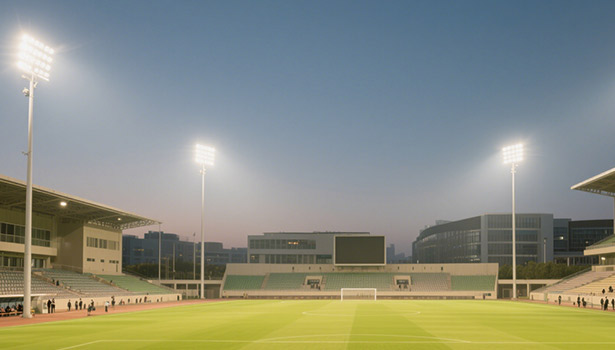
Advantages of solar LED flood lights
Bright lighting effects
Solar LED flood lights combine the advantages of solar and LED technology, offering powerful lighting capabilities. Taking a standard 11-person soccer field as an example, properly arranged solar LED flood lights can ensure uniform illumination across the entire field, even for large-scale soccer fields, providing lighting comparable to professional sports venues and eliminating any dark spots. In some newly developed soccer training facilities, the use of solar LED flood lights allows nighttime training to be as bright as daytime, enabling players to focus more on training details.
Eye-friendly design
Solar LED flood lights are designed with human eye comfort in mind, employing special optical designs and spectral adjustment technologies to produce soft lighting that does not cause visual fatigue for players, spectators, or television viewers. Unlike traditional lighting fixtures that emit intense direct light, solar-powered LED flood lights distribute light evenly, reducing glare and allowing for comfortable viewing. For example, in football matches involving teenagers, eye-friendly lighting design can better protect children's vision.
Durable and long-lasting
Solar LED flood lights are reliable and have a long service life. Once installed, they can operate continuously for over 50,000 hours. Even if brightness decreases over time, they will not suddenly fail; replacement is only necessary when brightness no longer meets standards. Additionally, their housings are typically made of high-strength, corrosion-resistant materials, enabling them to withstand harsh weather conditions such as high temperatures, heavy rain, and extreme cold, thereby reducing the risk of damage caused by environmental factors.
Smart energy-saving design
They utilize advanced circuitry with high energy conversion efficiency, resulting in minimal heat loss when powered on. Through a smart control system, solar LED flood lights automatically adjust brightness based on ambient light intensity, maximizing energy savings while meeting lighting requirements. Some high-end solar LED flood lights also feature remote monitoring capabilities, allowing managers to view the operational status of the lights in real-time via mobile devices or computers and address issues promptly.
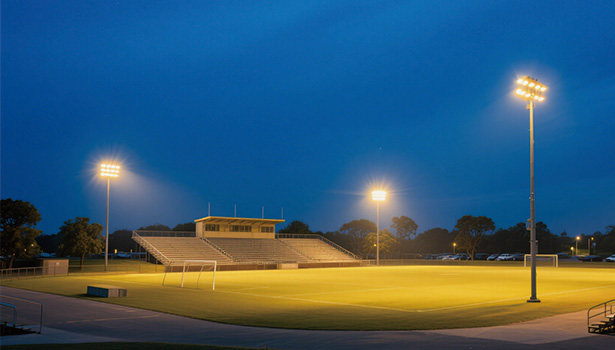
What to consider when purchasing solar LED flood lights?
Select specifications based on the usage scenario
When purchasing, the primary consideration is whether the flood light specifications meet the usage requirements. Different events have different brightness standards, so it is essential to ensure the selected lights meet the lighting requirements for the planned event. For professional league soccer fields, solar LED flood lights with brightness levels of 700 lux or higher are required; for community friendly matches, standards can be appropriately lowered, but basic lighting needs must still be met.
Select based on venue area
The size of the football field is a critical factor. Small outdoor flood lights cannot meet the requirements of large World Cup match venues. It is essential to ensure that the lighting fixtures can uniformly illuminate the entire field, guaranteeing that everyone can enjoy a clear viewing and playing experience. For standard 11-player football fields, the number of lighting fixtures and their installation locations must be calculated reasonably based on factors such as the field's length and width dimensions and the location of the spectator stands to avoid lighting blind spots.
Focus on brightness (illuminance value)
Illuminance (lux) is the standard for measuring the brightness of flood lights. High-brightness fixtures are required for televised events, while medium-brightness fixtures are sufficient for non-televised events. The appropriate illuminance value should be selected based on actual needs. When selecting fixtures, it is important to not only refer to event standards but also consider the surrounding environment, such as whether there are other light sources causing interference. If the venue is surrounded by building lights, it may be necessary to appropriately increase the illuminance value of the fixtures.
Ensure uniform light distribution
An ideal floodlight should provide uniform lighting across the entire venue, avoiding dark areas or overly bright spots, to create a fair playing environment for athletes and provide viewers with an optimal visual experience. This can be achieved by reviewing technical parameters such as the light distribution curve of the fixtures or referencing actual lighting examples from similar venues to ensure the selected fixtures can achieve uniform illumination.
Selecting appropriate power output
Typically, the power of solar LED flood lights ranges from 1000 to 1500W. The light source power is related to the number of bulbs and the overall installation design. It should be selected based on the venue area and required brightness to choose the appropriate power rating. Insufficient power may fail to meet lighting requirements, while excessive power leads to energy waste and increased costs. In actual design, professional lighting design software can be used for simulation calculations to determine the most reasonable power configuration.
Ensuring Illuminance Uniformity
In addition to brightness and light distribution, illuminance uniformity is equally important. Uniform illuminance ensures the accuracy of the game, allowing players and referees to clearly assess the on-field situation, while enhancing the overall viewing experience. Generally, the illuminance uniformity of a football field should be no less than 0.7, meaning the ratio of the minimum illuminance to the average illuminance within the field should be no less than 0.7. When purchasing lighting fixtures, it is important to inquire about the product's performance metrics regarding illuminance uniformity from the manufacturer and conduct actual measurements and adjustments after installation.
The flood lighting design for a football stadium is essentially a precise interplay of “light and shadow,” with flood lights serving as the core tool in this interplay. From the basic lighting requirements for training matches to the stringent standards of World Cup-level events, different types of flood lights, with their unique performance characteristics, support the smooth conduct of every match. They not only illuminate the green playing field under the players' feet but also present spectators with a clear and thrilling visual spectacle, while also providing the necessary conditions for referees to make fair decisions. Selecting the appropriate flood lights and scientifically planning the lighting layout is what infuses football events with their soul.

